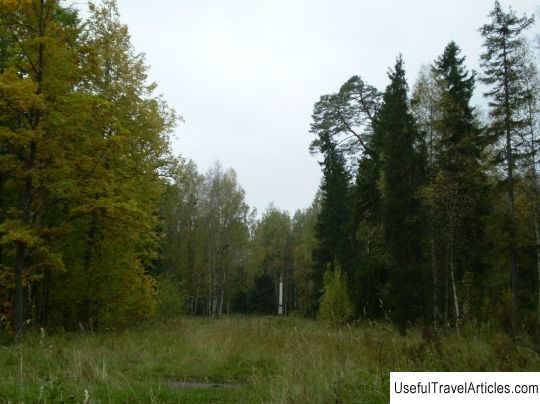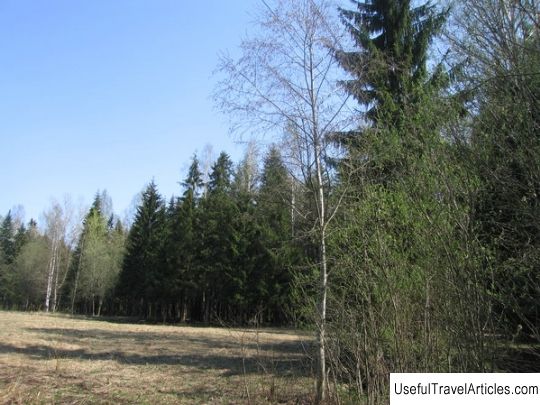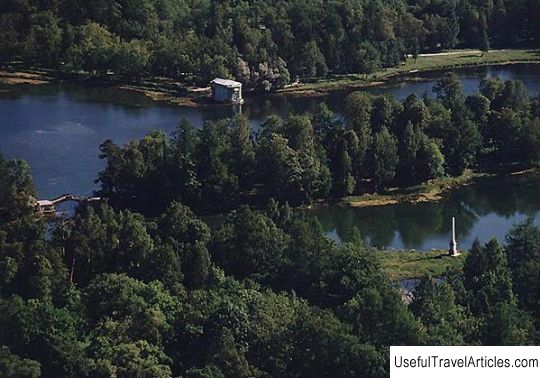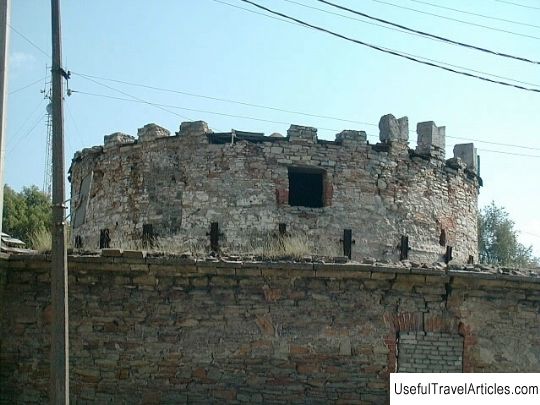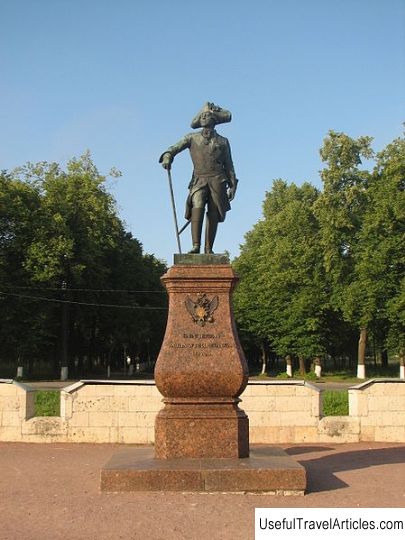Gatchina Palace description and photo - Russia - Leningrad region: Gatchina
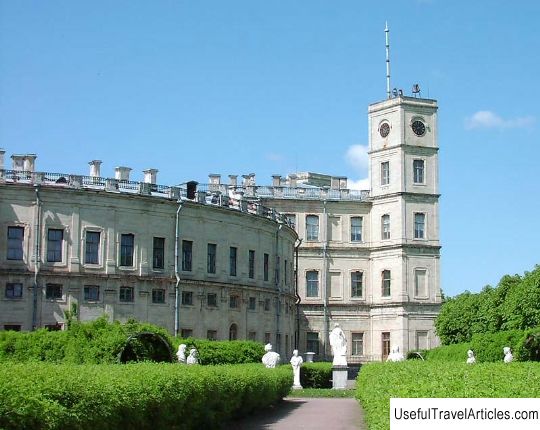
Gatchina Palace description and photos - Russia - Leningrad Region: Gatchina. Detailed information about the attraction. Description, photos and a map showing the nearest significant objects. Photo and descriptionGatchina is one of the most picturesque and interesting suburbs of St. Petersburg. It was the residence of the most mysterious and romantic Russian emperor - Paul I. There are two of his palaces, which now house museum expositions, and a huge park complex, consisting of gardens, ponds, utility and decorative buildings. PrehistoryOnce there was a village Khotchino , but since the 17th century there has been a "Gatchina manor". Catherine II grants this estate to her favorite Grigory Orlov in 1765. At this time, three years after the palace coup that elevated Catherine to the throne, Orlov was the second person in the state. He turns over a lot of money and starts a grandiose construction of his own palace on the estate. Orlov hires the Italian architect Antonio Rinaldi . He is an architect loved by the court - before that he built a lot in Oranienbaum, then he will build the pavilions of Tsarskoye Selo. The palace is being built slowly - from 1766 to 1781. The resulting building resembles a knight's castle rather than a country cottage: a three-story main building with two towers and adjacent two square wings, also similar to small castles, with turrets and courtyards. The cladding was made of local stone, which was mined nearby in the village of Paritsy. Orlov lived here for only two years. From his time, in addition to the palace itself, several park buildings have survived - for example, the Eagle pavilion and the Eagle Column , decorated with the heraldic Eagle. Under him, the Chesme obelisk was erected, in memory of the great victory of the Russian fleet in the Chesme Bay in 1770. After his death, the estate passes to the heir to the throne Pavel Petrovich . Paul I in GatchinaPaul is 29 years old by this time. His relationship with his mother does not work out - the imperious empress does not allow her son to come to power and does not trust him with anything serious. He had just married a tall blonde German princess Sophia Dorothea, who in Russia began to be called Maria Fedorovna . When it became clear that the mother would not allow the young to live peacefully in the capital, and the heir to the throne - to take at least some part in the government and have his own opinion, Paul moved away from the court. First to Pavlovsk , where he builds a palace for his young wife (Pavlovsk will forever remain her beloved residence), and then to Gatchina. Gatchina becomes his personal little kingdom, with its own little yard. Here life goes on, and they don't want to hear about Catherine II and St. Petersburg. Since 1796, the heir begins to rebuild the palace. He wants to settle in one of the outbuildings - so they are being built on. In another wing, the house church of St. Trinity - now it is working again. Pavel is keen on military affairs - and the square in front of the palace is surrounded by walls and turns into a parade ground for maneuvers and parades. A garden is laid out on the other side of the palace, and the whole complex is surrounded by three large park areas. Paul focuses on the palace complex he saw in Europe in Chantilly . Numerous pavilions, fountains, terraces are being built here, artificial islands - this is a real huge city, created according to the personal taste of the owner and his wife. For example, Birch House - pavilion- trompe l'oeil, presented as a gift to Paul by the Grand Duchess Maria Feodorovna. It is made of hewn wood and looks like a huge woodpile from the outside, but inside it is elegantly finished and was supposed to make its owners smile. Inside the house is equipped with a system of fake mirrors that expand the volumes, hide doors, etc. Island of Love reminds of the relationship of the grand ducal couple - an artificial island with a regular garden and a wooden Venus Pavilion surrounded by water on three sides. The temple has two entrances - one could enter it from the garden, or one could sail to its portico by boat. The ceiling is decorated with paintings dedicated to Venus. A whole system of artificial islands was built on the water - with their own names and legends. They were connected by a complex system of bridges, crossings and ferries - a water labyrinth. There were seven stone bridges and many wooden ones. On the largest island, Long, the architect Vincenzo Brenn , under whose leadership the entire complex was rebuilt, created a stone pier on stilts. It was adorned with statues representing different arts. And two lions guarded the entrance to the garden on the island. Pavel had his own fleet of 24 ships in Gatchina, and sometimes naval battles were arranged for him, in imitation of the "amusing" battles of Peter the Great. A huge greenhouse farm was created to provide the palace ... There were grape, peach and apricot greenhouses, their own strawberries, wild strawberries and watermelons were grown. The ruins of the Forest Conservatory have survived, in which plants were once grown in tubs that adorned park paths in summer. Maria Feodorovna, a great lover of gardens and flowers, organized a practical gardening school here. Another palace is being built, which has survived to our time. Priory Palace was created by the architect N. Lvov and most of all resembles a small Western European monastery. The palace was built using a unique technology, made of pressed clay impregnated with a solution. It was assumed that this palace would be the residence of the Prior of the Order of Malta, but the Order of Malta did not take root in Russia. The palace was little used - at one time a Lutheran church was located there, then it was again used for housing. In Soviet times, the Gatchina Museum of Local Lore was located here, then it was restored for many years, and since 2004 it has been again available for inspection. Gatchina in the 19th century After death Paul's mistress is the Empress Dowager Maria Feodorovna . But she prefers to rest in her beloved Pavlovsk, so nothing changes here until 1844. After her death, Emperor Nicholas I rebuilds and renovates the palace, in 1851 erects a monument to his father, Paul I. Under him, the Cathedral of St. Paul in the Russian-Byzantine style. This is one of the few cathedrals in the Leningrad region, which operated almost all the time, it was closed only for the period from 1938 to 1941. The cathedral remembers the shrines that were once kept here. The Order of Malta donated several Christian relics to the Priory Palace to Paul: the right hand of John the Baptist, part of the robe of Christ and the Filerma Icon of the Virgin. They were stored first there, then in the house of the Trinity Church of the Gatchina Palace, then in the Pavlovsk Cathedral, and in 1919 they were taken abroad. They are now in Serbia. Alexander II also loved this place very much. A passionate hunter, he transferred hunting here from Peterhof - he liked the local forests better. A special hunting settlement and a large menagerie were built here. Under Alexander III, Gatchina is being redeveloped again - using the latest technology. The entire system of the city water supply and sewerage system is being changed, electricity and telephone communications are installed in the palace, heaters are installed instead of stoves. Museum After nationalization in 1917, the palace was turned into a museum . During the war, it was not possible to take all the valuables out of the palace. Some of the things were buried, some remained in the basements. During the occupation, a number of valuables from the exposition were taken to Germany, and the Gatchina Palace itself was blown up by the Germans during the retreat. Only a part of the wall has survived, you can see it now. In the post-war years, the remaining part of the building is being renovated, but there are not enough funds for the full reconstruction of the museum. Collections are distributed among other museums, and here they organize a naval school . Only the park is considered a protected museum area. But since 1976, the restoration of the ceremonial halls in the form in which they looked in the 18th century began, and in 1985 the palace was opened to visitors. Work on the restoration of the palace and the park continues to this day, but the main thing has been done. The Great Gatchina Palace is now available for inspection. The interiors have been recreated, some of the things have been returned from here from other museums. Here are rich collections of furniture, dishes, interior items, paintings and graphics. Available for inspection are underground passage in the basement, Trinity Church, ceremonial rooms and an exhibition of weapons. The second museum object is Priory palace and park around it. The chapel of the Priory Palace has excellent acoustics, so concerts are regularly held here. There are more than 30 sights in Palace Park . These are four specially arranged gardens - Own, Botanical, Lipovoy, Upper Golland and Lower Golland, seven gates, five bridges, many monuments, grottoes and park pavilions. Some structures - for example, a poultry house or a forest greenhouse are in ruins, but most of the buildings have been restored. Interesting factsTwo films about Emperor Paul were filmed in the Gatchina Palace - "Steps of the Emperor" and "Poor, Poor Pavel". In Gatchina, a new mobile service, "Virtual Tour Guide", was recently launched. When you hover your phone at a plate with a QR code, a virtual Paul I appears and tells about his favorite city. Note
                We also recommend reading The Victoria Bridge description and photos - Australia: Brisbane and the Sunshine Coast Topic: Gatchina Palace description and photo - Russia - Leningrad region: Gatchina. |
